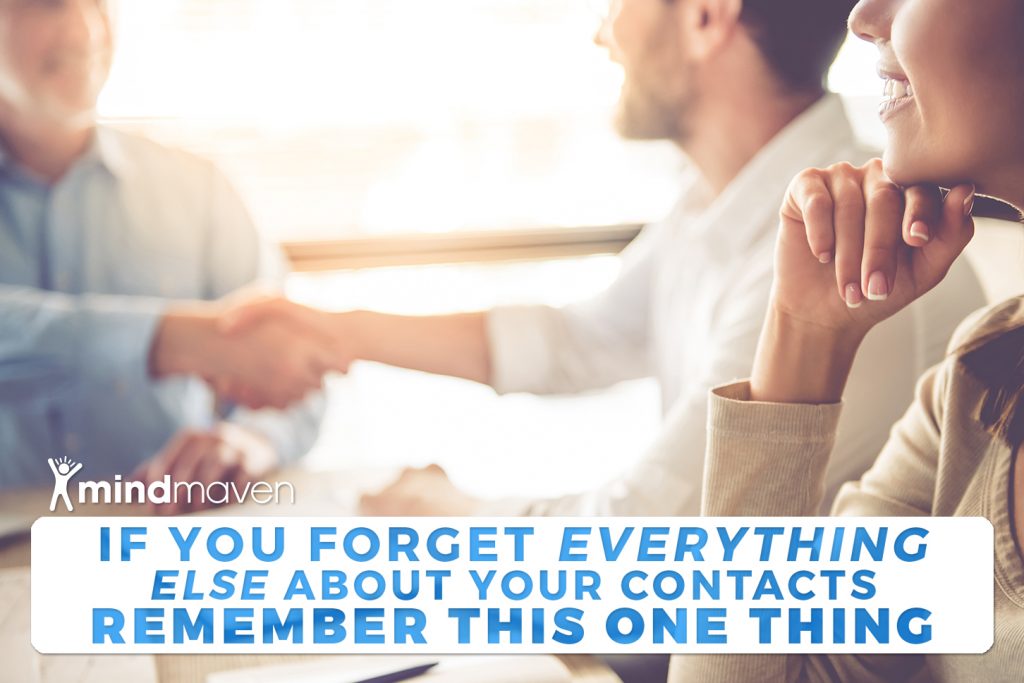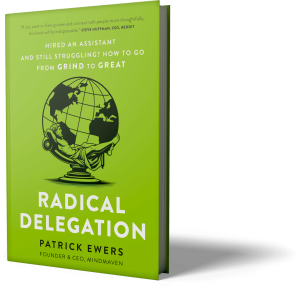
150.
As Maria Konnikova (@mkonnikova) points out in The Limits of Friendship, the average person can maintain about 150 relationships at a time. This limitation, called the Dunbar Number, is illustrated time and time again in our day-to-day lives:
We meet new people, shake hands, have great conversations, agree to stay in touch, collect business cards, connect on LinkedIn and, too often, that’s it. That’s the extent of the relationship.
We subconsciously believe we can’t manage more relationships, so we don’t. But what if we could? What if we had to, to truly reach our full potential?
The True Secret to Success and Happiness
As anyone familiar with my work knows, I’m a firm believer that the best things in life, from career success to personal happiness, come from and are enhanced by our relationships; by the people we know and trust, remember this.
Agree? Tweet it!
Ergo, the more high-quality relationships we have, the likelier we are to experience greater levels of happiness and success.
But here’s the problem: We can’t possibly create and maintain a deep relationship with every new person we meet. As a result, most people let the majority of new contacts slip into mental obscurity. After all, what’s the chance that relationship was ever going to blossom into anything, right?
Surprisingly high. According to Stanford sociologist Mark Granovetter’s The Strength of Weak Ties, the most valuable opportunities often come from those whom we’re least connected with.
The Danger of Neglected Relationships
Let me illustrate the risk you take when neglecting relationships: Imagine you meet an enthusiastic young founder named Michael Smith at a networking event. The two of you enjoy a smart, enlightened conversation and its clear Michael is going to go far in his career.
Nevertheless, neither of you pursue the relationship any further after the event. Then, three years later, you’re trying to connect with the CEO of a rising startup. You hop on LinkedIn and are delighted to see you’re only two degrees of separation away from him.
But there’s a problem: The only contact you share is Michael Smith, the founder you met three years ago but haven’t talked to since. You recognize him, but don’t remember him; and he certainly doesn’t remember you.
So although you’re only two degrees of separation away from the person you want to reach, you lack the context and relevance to bridge that gap.
Sure, you could reach out and ask Michael for an introduction anyway. But that request is going to come across as awkward at best and inconsiderate at worst; either way, it’s highly unlikely to succeed.
So here’s the two problems, remember this:
- You can’t develop a deep, meaningful relationship with every new person you meet in the hopes they’ll one day be relevant or valuable, but
- You also can’t let new relationships fall into dormancy because you may need them one day.
Luckily there’s a solution to both problems, and all it takes is a one-sentence field in your contact management solution called the “We Met” statement.
Meet the “We Met” Statement
A “We Met” statement is exactly what it sounds like: A one-sentence summary describing the context through which you first interacted with someone, entered into your contact management solution.
For example:
- We met through an introduction by Elizabeth McBride during the RSS Chapter Meetup event in downtown San Francisco on 03/27/16.
- We met through an email introduction by Eric Johnson on 05/09/15.
- We met at Mazarine Coffee in downtown San Francisco on 09/03/14 when I asked about a quiet place to make a phone call.
As you can see in the examples above, an effective We Met statement has three primary elements:
- How you met (Introductions or circumstances),
- Where you met (Events or locations), and
- When you met (Down to the day).
Using this information, you can easily activate an otherwise dormant relationship.
For example, continuing the scenario above, imagine you want to connect with Michael Smith again after three years of inactivity. With a “We Met” statement, you’d be able to revive the relationship with an email like this:

And although there’s still no guarantee Michael will be willing to make the introduction, the fact that you remember him (and he now remembers you) means you’re much more likely to get what you want.
Think it’s odd to ask for a favor from someone you haven’t talked to in three years? Think again: As Michael Simmons (@michaeldsimmons) illustrates in How Asking Favors Can Build Relationships, asking for help is one of the quickest ways to establish and strengthen connections.
Integrating “We Met” Statements into your Contact Management Solution
The easiest way to integrate We Met statements into your relationship management repertoire is to add them to your contact management solution.
Many industry tools initially launched with a We Met statement field but due to a low usage rate by users, they were removed in favor of a cleaner interface. However, a few smart businesses do recognize the value of these statements.
Once you’ve got the We Met field into your Contact Management Solution, the only thing left is to ensure you fill it in for every new contact you meet. To make sure that happens, I recommend adding a We Met statement to meeting debriefs for new contacts.
Leverage the Full Extent of Your Network
One sentence.
Remember this, that’s all that stands between you and an otherwise inaccessible contact. With a We Met statement, you can activate any relationship, regardless of how long it’s sat dormant.
So here’s my challenge to you: As soon as you finish reading, head over to your contact management solution and create a custom “We Met” input field. Then, each time you meet someone new and potentially valuable, create a quick statement.
The ball’s in your court now. Are you going to continue to fill your database with decaying and forgotten relationships, or are you going to take the first step in ensuring the long-lasting value of your relationships?


